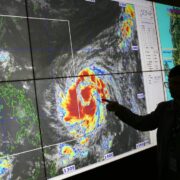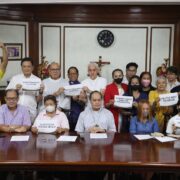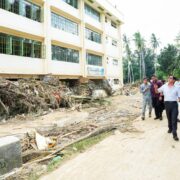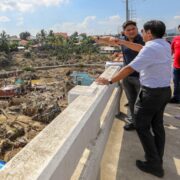Improving disaster response

Severe Tropical Storm “Kristine” (international name: Trami) did not even rise to the level of a typhoon based on its maximum wind speed, but it unleashed torrential rains that left a wide trail of devastation across Luzon and Visayas provinces, making it the deadliest and most destructive cyclone to hit the country so far this year.
It slammed into the Philippines last Oct. 24 and dumped twice as much rain in the Bicol Region alone than 2009’s Tropical Storm “Ondoy” (Ketsana), causing massive and unprecedented flooding in many towns and cities, displacing over 100,000 families.
By the time that “Kristine” left, at least 150 people had been killed by the massive flooding and landslides. Damage to agriculture and infrastructure, meanwhile, has reached over P11 billion, taking a heavy toll on rice production, roads and bridges, schools and flood control facilities. Damage to agriculture alone has surged to P6.2 billion, according to the Department of Agriculture.
With seas becoming warmer because of climate change thus supercharging storms, it is a given that these extreme weather events will become even more frequent and severe, and will hit the Philippines particularly hard.
This stark reality prompted President Marcos to promise to improve disaster risk reduction efforts, a welcome move that Filipinos would want his administration to fulfill.
Low levels of prevention
In a vlog posted last week in the wake of “Kristine” and Supertyphoon “Leon” (Kong-Rey) that battered Batanes, Mr. Marcos underscored the need to improve planning of infrastructure projects to minimize the impact of these storms on communities.
Mr. Marcos admitted that these disasters are now very much a part of Filipinos’ lives, thus the overwhelming need to shore up the country’s ability to face them. “In the New Philippines, we will further improve our response to the challenge of climate change,” he added.
The Philippines, after all, registered the highest risk to natural disasters for the third straight year in the 2024 edition of the World Risk Report, which covers 193 countries ranked according to levels of exposure, vulnerability, and ability to cope with crises. Exacerbating the Philippines’ risk are the low levels of prevention and preparedness that make the country’s “vulnerability the highest.”
It’s position in the typhoon belt means that it braces for about 20 storms and typhoons every year. And also because it is in the Pacific Ring of Fire, it is likewise regularly hit by earthquakes and volcanic eruptions.
The Philippines already knows full well how devastating these typhoons can get with the memory of Supertyphoon “Yolanda” (Haiyan) still fresh in the minds of those affected by it some 12 years since it barreled through central Philippines, leaving some 7,000 dead and billions in damage to property.
Flood control projects
Responding to climate change means preparing the country long before the disasters strike and upgrading everything from the building code to the infrastructure design to take into account the fact that natural disasters will come in more frequently and will be more severe.
These will necessarily include the flood control projects that the President boasted about during his last State of the Nation Address but which have raised questions in the wake of severe floods recently.
The Department of Environment and Natural Resources has completed the National Adaptation Plan (NAP), among others, as part of an “integrated approach towards crafting new evidence-informed plans on mitigation and adaptation” for disasters. The NAP supports the National Economic and Development Authority’s Philippine Development Plan 2023-2028 framework to accelerate climate action and strengthen resilience.
“Mitigation, adaptation, and disaster risk reduction are critical elements in our race to resilience. These tasks must be informed by science and they are for the whole-of-society and not just the whole-of-government,” Environment Secretary Maria Antonia Yulo-Loyzaga had said during a dialog with the private sector.
Ray of hope
A ray of hope is provided by the priorities set by the Marcos administration in the 2025 budget that includes the implementation of the NAP, among other programs, to strengthen the ability of the country to face these natural disasters.
With the budget deliberations coming to a close, the hope is that Mr. Marcos’ resolve will be backed by budgetary support that will then be matched with a culture of mitigation and adaption by the national and local government machinery.
This culture should be embraced by the citizens themselves with local governments implementing mitigation measures before the typhoons strike and then working for more long-term solutions.
These should include making calamity-resilient infrastructure projects and common sense solutions such as clearing waterways and planting more trees to protect structures from storm surge and high winds.
Climate adaptation must be our new way of life. Otherwise, Filipinos will just have to prepare themselves for more days of mourning.

















